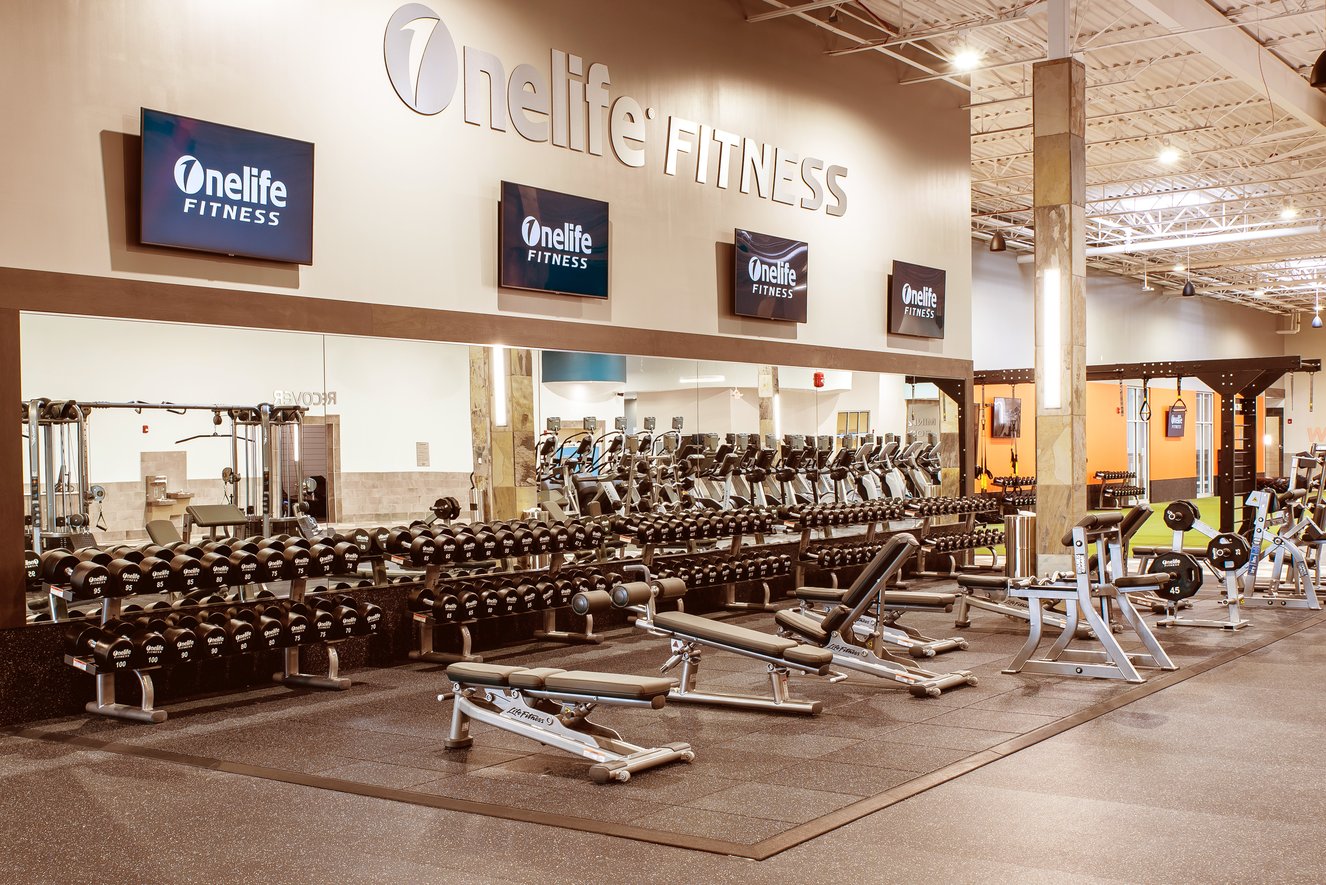Crucial Strength Training: Expert Insights from Our Virginia Trainers
Crucial Strength Training: Expert Insights from Our Virginia Trainers
Have you ever felt like something was missing in your gym routine or as if those cherished fitness milestones were constantly just beyond your grasp? Trust us, you're in good company.
It's a familiar tale: countless folks find themselves hitting an all-too-familiar plateau, baffled about the best move forward to reap optimal health rewards. We've witnessed that struggle—spinning our wheels, sampling every trending workout fad, yet the results we long for seem elusive.
But here's some encouragement! Our comprehensive exploration into muscle mechanics has unearthed a pivotal insight: strength training is the key ingredient to revitalize your fitness journey.
Amidst this treasure trove of info, one striking piece stands out—a meta-analysis providing solid evidence that resistance exercises could substantially lower risks of premature death, truly highlighting their vital impact on longevity.
This blog is brimming with wisdom from some of Virginia's finest trainers who shine a light on how weightlifting transcends muscle building—it enhances bone density, ignites metabolism, and can even foster mental resilience.
Are you geared up for real change? Let's embark on this empowering journey together and unlock a more robust version of yourself!
Ready to work out? Get your FREE PASS from Onelife Fitness today!
Key Takeaways
- Strength training is essential for improving overall health and well-being by enhancing muscle strength, bone density, and metabolic rate.
- It plays a crucial role in preventing chronic diseases like diabetes, heart disease, and osteoporosis by regulating blood sugar levels and improving insulin sensitivity.
- Contrary to common myths, strength training benefits everyone regardless of age or gender. It helps maintain muscle mass as we age while promoting a lean physique and reducing the risk of injuries.
- Strength training in fitness routines improves cardiovascular health, body mechanics, balance, and overall stability.
Defining Strength Training: A Fundamental Overview

Strength training isn't just about sculpting an impressive physique—it's a cornerstone of comprehensive fitness that fortifies our muscles with lasting power and resilience. Picture this: you're engaging in exercises that challenge your muscles, whether by hoisting free weights, working with weight machines, stretching resistance bands, or simply leveraging the weight of your own body.
Each rep is more than a movement; it's a call to action for your muscle fibers to grow stronger and thicker over time. But let's be clear—this journey isn't solely for those aiming to build showy muscles; it's also about reinforcing the scaffold that keeps us upright, nimble in our day-to-day lives, and safeguarded from injuries.
Think of strength training as a multi-tool for health enhancement—it goes beyond physical improvements. It plays a crucial role in maintaining bone health by keeping osteoporosis at bay—a huge perk, especially for post-menopausal women—and is an ally against chronic foes like type 2 diabetes and hypertension.
The best part? After you've finished clanging and banging those weights around, your metabolism stays revved like an idling sports car—you're burning calories while kicking back or typing away at work! This metabolic magic aids not just in managing weight but also ripples positively into other areas of life, such as sleep quality and upright posture.
Embrace strength training as more than just gym time—nurturing the engine room that powers all aspects of life. And remember, when we strengthen our bodies with purposeful care and effort, we aren't simply lifting weights—we're uplifting ourselves toward better health.
Expert Insights: Virginia Trainers on Strength Training

Virginia trainers emphasize the crucial role of strength training in fitness regimens, debunking myths and providing evidence-based perspectives on the benefits and techniques.
The Role of Strength Training in Fitness Regimens
Strength training is not just about building muscle; it's a fundamental part of a balanced fitness regimen that caters to our health and well-being. We incorporate it into our routines because it counteracts the loss of lean muscle mass associated with aging, allowing us to maintain vibrancy and mobility as we age.
Regular resistance exercises, from lifting weights to push-ups, increase our muscular strength and metabolic rate, which means burning more calories even at rest.
We rely on strength training to improve physical appearance and as a proactive measure against chronic diseases. It increases bone density, making us less susceptible to fractures.
Our muscles become more adept at managing glucose levels, which is critical for tackling diabetes or aiming to prevent it. The benefits extend beyond the muscles and bones, as this form of physical activity also plays a significant role in heart disease control by maintaining healthy blood pressure levels and reducing body fat.
Strength training is an all-rounder in fortifying our overall mental health benefits portfolio from enhanced mood to better cognitive function.
Debunking Myths About Strength Training
We often encounter myths about strength training that can deter us from incorporating it into our fitness routine. Let's clear up these misconceptions and reveal the truth so we can confidently approach our workouts.
- Myth 1: It's Only for Bodybuilders: Many believe lifting weights is strictly for those who want massive muscles. However, strength training benefits everyone by enhancing overall health and fitness. It helps maintain muscle mass as we age, which is crucial for mobility and metabolism.
- Myth 2: Women Get Bulky: There's a common fear among women that weight lifting will cause them to look bulky. On the contrary, it leads to a leaner physique due to increased muscle tone and reduced fat mass.
- Myth 3: It Causes Injuries: Some people shy away from weights, thinking they're an injury waiting to happen. The truth is, with proper form and technique, strength training is quite safe. Trainers emphasize learning correct movements to minimize risk.
- Myth 4: Benefits Are Only Muscular: While building muscle is a significant advantage of weight lifting, it's far from the only one. Resistance training has been shown to improve bone density, combat osteoporosis, and support joint health.
- Myth 5: Not Suitable for Older Adults: The idea that older adults should avoid weight training is outdated. Strengthening exercises are key in preventing sarcopenia – the loss of muscle mass due to aging – making it essential for maintaining independence later in life.
The Multifaceted Benefits of Strength Training

Strength training offers a range of benefits, including enhanced muscle strength and tone, preservation of bone density and joint health, boosted metabolic rate and weight management, improved cardiovascular health, better body mechanics and balance, management, and prevention of chronic diseases, elevated energy levels, and mood.
Enhanced Muscle Strength and Tone
We all strive for a body that's fit but also strong and well-defined. With strength training, we tap into the power of resistance to challenge our muscles. This isn't just about lifting heavy weights; it's about engaging in exercises that push our muscles to adapt, grow stronger, and gain definition.
Imagine doing squats or push-ups - these moves recruit multiple major muscle groups, ensuring we build functional strength that serves us in daily activities.
Research confirms that when you pair consistent strength training with proper nutrition and rest, significant muscle growth is within reach. Our Virginia staff emphasizes this trio as the key to unlocking enhanced muscle tone—resulting in arms you can show off and legs that carry you confidently through life's challenges.
And let's not forget the satisfaction of seeing progress every week; it boosts motivation like nothing else can!
Preservation of Bone Density and Joint Health
Strength training is crucial in preserving bone density and joint health, especially as we age. By engaging in muscle-strengthening activities, individuals can prevent the loss of lean muscle mass and enhance overall musculoskeletal strength.
This is imperative for maintaining optimal bone health and preventing osteoporosis and osteoarthritis.
Furthermore, strength training exercises help increase muscle mass, which supports our joints by providing them with better stability and support. As a result, regular participation in strength-building exercises contributes to strong bones and promotes healthy joints, ultimately leading to improved mobility and overall well-being.

Boosted Metabolic Rate and Weight Management
Strength training is a key factor in boosting metabolic rate, ultimately aiding weight management. By building lean muscle and increasing resting metabolic rate, the body burns more calories even at rest.
This can increase overall energy expenditure and make managing weight and preventing weight gain easier.
Incorporating strength training into your fitness regimen helps enhance muscle tone and significantly maintains a healthy weight. It's essential for those seeking effective ways to manage their weight while improving overall health and wellness.
Improved Cardiovascular Health with Resistance Training
Strength training is pivotal in enhancing cardiovascular health by reducing the risk of chronic diseases and improving overall heart function. Regular muscle-strengthening activities contribute to better bone density, joint support, and muscular strength, all vital for maintaining a healthy heart.
According to expert trainers, engaging in strength training can also decrease visceral fat, minimizing the risk of cardiovascular disease and supporting optimal heart health.
Incorporating strength training into a comprehensive fitness regimen is crucial for promoting improved cardiovascular health outcomes and overall well-being. It contributes significantly to preventing the loss of lean muscle mass associated with aging while benefiting individuals with chronic health conditions. It is essential to any holistic approach toward achieving optimal heart health.
Better Body Mechanics and Balance
Strength training plays a vital role in enhancing body mechanics and balance. Targeting different muscle groups helps prevent muscle imbalances, leading to poor posture.
This improved body alignment improves overall stability and coordination, reducing the risk of falls and injuries.
Regular strength training also aids in strengthening core muscles, including those that support the spine and pelvis. This improves posture and optimizes body mechanics for everyday movements, promoting a more efficient and balanced physical performance.
Management and Prevention of Chronic Diseases
Regular strength training is vital in managing and preventing chronic diseases such as diabetes, heart disease, and arthritis. With its positive impact on metabolic health, strength training helps regulate blood sugar levels and improve insulin sensitivity, making it an essential component of overall wellness.
Moreover, personalized strength training programs tailored to individual needs and limitations can particularly benefit those with chronic conditions. By enhancing muscle strength, bone density, and joint health, regular strength training reduces the risk of injury and chronic pain while contributing to better management of existing conditions.
Strength training is a key ally in the fight against chronic diseases by offering tangible benefits that contribute to an improved quality of life for individuals with these health challenges.
Elevated Energy Levels and Mood
Incorporating strength training into a fitness routine can increase energy levels and improve mood. This exercise has boosted overall vitality, making it easier to tackle daily tasks with vigor and enthusiasm.
Additionally, strength training can help enhance mental well-being, providing a natural lift in mood and promoting a sense of positivity and motivation throughout the day.
Strength training has also been linked to increased endorphin production, uplifting mood, and reduced stress or anxiety. These benefits extend beyond physical health, ultimately enhancing the overall quality of life for individuals who prioritize regular strength-training workouts as part of their holistic wellness approach.
Strength Training as a Catalyst for Overall Health
Strength training is a fundamental catalyst for overall health, contributing to muscle strength, bone density, and physical fitness improvements. By engaging in regular strength training, individuals can effectively manage their weight and enhance metabolic health through increased muscle mass and improved metabolism.
Furthermore, this form of exercise has been shown to have positive effects on mental health by reducing symptoms of anxiety and depression. Additionally, it significantly enhances balance, coordination, and functional abilities necessary for daily activities.
Moreover, strength training is instrumental in preventing injuries while bolstering cardiovascular health and bone density. This form of exercise also aids in stabilizing joints and reducing body fat levels.
Strength Training Techniques and Modalities

Strength training techniques and modalities include traditional weightlifting, bodyweight exercises, resistance band workouts, and High-Intensity Interval Training (HIIT). These methods offer diverse options to build strength and improve overall fitness levels.
Traditional Weightlifting
Traditional weightlifting is a fundamental strength training modality that involves lifting free weights, such as dumbbells and barbells, to build muscle strength and endurance. Incorporating traditional weightlifting into your fitness regimen can help improve overall physical performance by targeting specific muscle groups through various exercises like squats, deadlifts, and bench presses.
This resistance training program also plays a crucial role in enhancing bone density and joint health, making it essential for individuals looking to maintain strong and healthy musculoskeletal systems.
Additionally, traditional weightlifting provides the opportunity for progressive overload, allowing you to challenge your muscles and continuously stimulate growth over time.
Bodyweight Exercises
Bodyweight exercises are a versatile and accessible way to build strength and endurance, using only the resistance provided by one's own body weight. These exercises require no special equipment, making them ideal for individuals of all fitness levels.
Popular bodyweight exercises include push-ups, which target the chest, shoulders, and triceps; squats that engage the lower body muscles; lunges for leg strength; planks to strengthen the core muscles; and burpees for a full-body workout.
Incorporating these exercises into your routine can improve muscle tone, increase overall strength, and enhance physical fitness without needing gym equipment.
These workouts present an opportunity to engage multiple muscle groups simultaneously while also improving balance and proprioception. The versatility of bodyweight exercises makes them suitable for beginners and seasoned athletes looking to diversify their training regimen.
Resistance Band Workouts
Resistance band workouts are a popular and versatile form of strength training exercise. These exercises use elastic bands to create resistance, targeting specific muscle groups.
Individuals can tailor their resistance band workouts to their fitness levels and goals with various exercises available.
Incorporating resistance band workouts into your regimen can improve muscle endurance and flexibility. The versatility of these bands allows for a dynamic workout experience that caters to individual needs while providing effective results.
High-Intensity Interval Training (HIIT)
High-Intensity Interval Training (HIIT) combines short, intense exercise with brief periods of rest or lower-intensity activity. It's linked to muscle-building and fat-burning, making it a key component in strength training regimens.
HIIT doesn't require special equipment, so it's accessible for many fitness enthusiasts looking to maximize their workouts without spending extended time at the gym.
Rest between HIIT sessions is crucial for allowing muscles to recover and grow stronger. This approach challenges the body and promotes overall health by boosting cardiovascular fitness and endurance while burning calories efficiently.
Customizing Your Strength Training: Tips from Virginia's Fitness Pros

Assess your fitness level and set realistic, achievable goals to guide your strength training program. Incorporate progressive overload by gradually increasing the intensity of your workouts to ensure continued muscular adaptation.
Balance your workouts with adequate rest and recovery periods to prevent overtraining and injury. Embrace consistency in your training routine while incorporating variety to keep things interesting and challenging.
Assessing Your Fitness Level and Goals
Assessing our fitness level is crucial for tailoring a strength training program that meets our needs. By understanding where we currently stand regarding strength, endurance, and overall fitness, we can set specific and realistic goals to guide our workouts.
This assessment helps us choose the right exercises and weights that align with our current abilities while providing room for growth. With clear goals and weight training equipment, we can customize our strength training routine to build muscle, improve cardiovascular health, enhance bone density, manage weight effectively, and boost overall wellness.
Setting SMART (specific, measurable, achievable, relevant, time-bound) goals based on an honest evaluation of our fitness level allows us to track progress and stay motivated to achieve optimal physical strength and well-being.
Incorporating Progressive Overload
Incorporating progressive overload is essential for maximizing the benefits of strength training. By gradually increasing the weight, number of repetitions, or intensity of your workouts, you can continuously challenge your muscles and stimulate growth.
This method helps prevent plateaus in your progress and promotes ongoing muscle strength and endurance improvements. Fitness professionals in Virginia emphasize the significance of incorporating progressive overload to tailor strength training regimens to individual goals and abilities.
Virginia's trainers provide valuable insights into effectively implementing progressive overload techniques such as increasing resistance, adjusting exercise complexity, or enhancing workout intensity.
Balancing Workouts with Recovery
Balancing workouts with recovery is essential for achieving optimal results in strength training. Incorporating rest days into your workout routine helps prevent overtraining and reduces the risk of injury, allowing your muscles to repair and grow stronger.
Recovery techniques such as foam rolling, dynamic stretching, and proper nutrition support muscle recovery and minimize soreness after intense workouts. Virginia trainers emphasize the significance of finding this balance to enhance overall fitness levels and maximize the benefits of strength training.
Understanding the importance of rest and recovery prevents burnout and ensures you can consistently perform at your best during each workout session. By prioritizing recovery alongside exercise, individuals can maintain their energy levels, reduce fatigue, and ultimately improve their long-term fitness outcomes.
Embracing Consistency and Variety
Embracing consistency and variety in strength training is essential for achieving optimal results. Committing to a regular workout schedule helps build muscle, improve bone density, and enhance overall physical performance.
By incorporating diverse exercises and techniques, individuals can prevent plateaus, reduce the risk of overuse injuries, and keep their workouts interesting and engaging.
This combination of power training ensures continuous progress while maintaining enthusiasm for the fitness journey.
Furthermore, by embracing consistency and variety in strength training regimens, individuals can effectively address different muscle groups while minimizing the likelihood of monotony or burnout.
Safety Considerations in Strength Training
Proper form and technique are crucial in strength training to prevent injury. Understanding your body's limits and when to seek professional guidance is also key. To learn more about safety considerations in strength training, read this full article for expert insights and tips from our Virginia trainers.
Proper Form and Technique
Strength training exercises with proper form and technique are essential to prevent injuries and maximize results. Maintaining correct posture, good form, engaging core muscles, and using the appropriate range of motion are fundamental aspects of executing exercises safely and effectively.
For instance, keeping the back straight, chest up, and knees aligned with the toes during a squat helps distribute weight evenly across the body while minimizing stress on the lower back and joints.
These simple adjustments can significantly reduce the risk of injury and optimize muscle engagement during workouts.
Understanding Your Body's Limits
Understanding your body's limits is crucial for ensuring a safe and effective strength training regimen. It involves recognizing signs of fatigue, muscle soreness, or discomfort during workouts and being mindful of the need for rest and recovery.
Overexerting yourself can lead to injuries that hinder progress and set back fitness goals.
We must acknowledge that each individual's body has unique capabilities and limitations. Listening to our bodies allows us to tailor our strength training routines accordingly, adjusting workouts' intensity, frequency, and duration as needed.
Conclusion: Embracing Strength Training for a Healthier Life
Before embarking on a strength training program, it is crucial to seek professional guidance, particularly if you have pre-existing medical conditions or injuries. Professional trainers and fitness experts can provide personalized advice based on your health needs and fitness goals.
This guidance helps prevent injuries and ensures the strength training program suits your circumstances.
It's important to recognize that seeking professional guidance isn't just about safety; it also maximizes the benefits of strength training. Trainers can tailor exercises to address any limitations or concerns you may have, such as joint issues or muscle imbalances.
Let Onelife Fitness share what we know from our Virginia training staff.
FAQs
1. Why is strength training crucial, according to Virginia trainers?
Strength training is crucial because it helps prevent bone loss, builds muscle, and can improve overall health and physical activities.
2. Can strength training and aerobic exercise help with weight loss?
Strength training paired with aerobic exercise can boost weight loss by increasing muscle mass and improving body composition.
3. Should older adults in Virginia do strength training exercises?
Definitely! Strength training has numerous health benefits for the frail elderly by enhancing their stamina, balance, and ability to perform everyday health tasks.
4. What are some health conditions that benefit from strength training?
People with type 2 diabetes, osteopenia, obesity, or heart conditions can manage their disorders better through regular resistance exercise training.
5. How does our Virginia gym's approach cater to people who have never lifted weights?
Our trainers in Virginia specialize in guiding dieters and beginners through safe exercises like push-ups and other forms of isometric resistance to build up their fitness levels responsibly.
6. Does any research back up the importance of strength training for general health care?
Absolutely! The Centers for Disease Control and Prevention (CDC) suggests incorporating muscle-strengthening activities per Americans' Physical Activity Guidelines for substantial health benefits.
Contact Onelife Fitness for your FREE PASS and all our gym classes across GA, MD, VA, DC & WV. We look forward to helping you on your health and fitness journey!